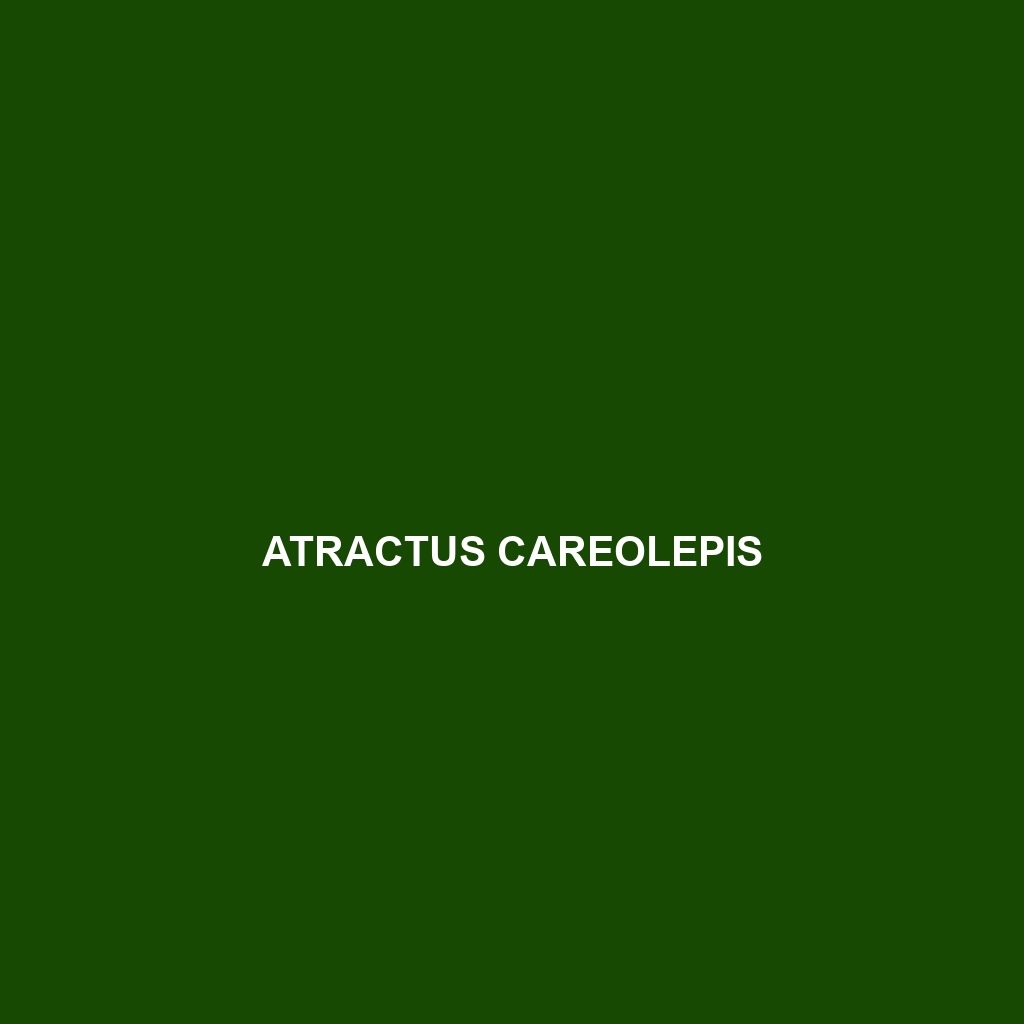Atractus boulengerii – Species Description
Common Name: Atractus boulengerii
Scientific Name: Atractus boulengerii
Habitat: Atractus boulengerii is primarily found in the tropical rainforests of Central and South America, specifically in countries such as Colombia, Ecuador, and Peru. This terrestrial snake prefers moist, lowland forest environments and is often located near streams and rivers, where humidity levels are highest. Its habitat is characterized by dense vegetation and rich biodiversity, providing ample cover from predators and suitable conditions for hunting.
Physical Characteristics: Atractus boulengerii typically reaches a length of 60 to 80 cm (approximately 24 to 31 inches). Its body is slender and elongated, often exhibiting a striking pattern that features a series of dark brown or black bands against a lighter background, which may range from beige to reddish-brown. The snake’s smooth scales and distinctive markings help it blend into its habitat, making it an adept ambush predator. Notably, it possesses a small, pointed head that is not distinct from its neck, aiding in its camouflage.
Behavior: Atractus boulengerii is primarily nocturnal, leading an elusive lifestyle that makes it difficult to observe in the wild. The snake is known for its burrowing behavior, utilizing leaf litter and soil to hide from both prey and predators. It exhibits a unique defense mechanism of coiling tightly when threatened, and it is known to be a shy species that will often escape rather than confront threats directly. Additionally, this species displays interesting hunting techniques, often remaining motionless to ambush unsuspecting prey.
Diet: Atractus boulengerii primarily feeds on small invertebrates, particularly earthworms and various types of insects. Its feeding habits showcase its role as a primary consumer in the ecosystem, as it effectively helps control invertebrate populations. The snake has a specialized digestive system adapted to efficiently process soft-bodied prey, allowing it to thrive in its specific ecological niche. This diet also highlights the importance of moist environments, as these encourage the presence of its preferred food sources.
Reproduction: Atractus boulengerii is ovoviviparous, meaning that it gives birth to live young rather than laying eggs. The breeding season occurs during the rainy months, when environmental conditions are optimal for offspring survival. Females can give birth to litters ranging from 5 to 12 young, which are born fully formed and capable of independent survival shortly after birth. Maternal care is minimal, as new hatchlings must quickly adapt to their surroundings to avoid predators.
Conservation Status: Currently, Atractus boulengerii is classified as ‘Data Deficient’ by the IUCN Red List, meaning that there is not enough data available to make a thorough assessment of its conservation status. However, habitat destruction and deforestation pose significant threats to its existence, raising concerns over its population sustainability. Effective conservation measures are necessary to protect this species and its natural habitat.
Interesting Facts: Atractus boulengerii is often referred to as the “Boulenger’s Snakeling” in local fauna discussions due to its unique color patterns and elusive nature. It contributes significantly to the health of the ecosystem by controlling the population of its prey species. Furthermore, the snake has garnered interest among herpetologists due to its specialized adaptations and behavioral traits.
Role in Ecosystem: Atractus boulengerii plays a crucial role in its ecosystem by serving as both predator and prey. By controlling the populations of small invertebrates, it helps maintain ecological balance. Additionally, it serves as a food source for larger predators, thus contributing to the food web. Its presence indicates a healthy, biodiverse environment, which is vital for maintaining overall ecological integrity. The interactions between Atractus boulengerii and other species highlight its importance in forest ecosystems.
